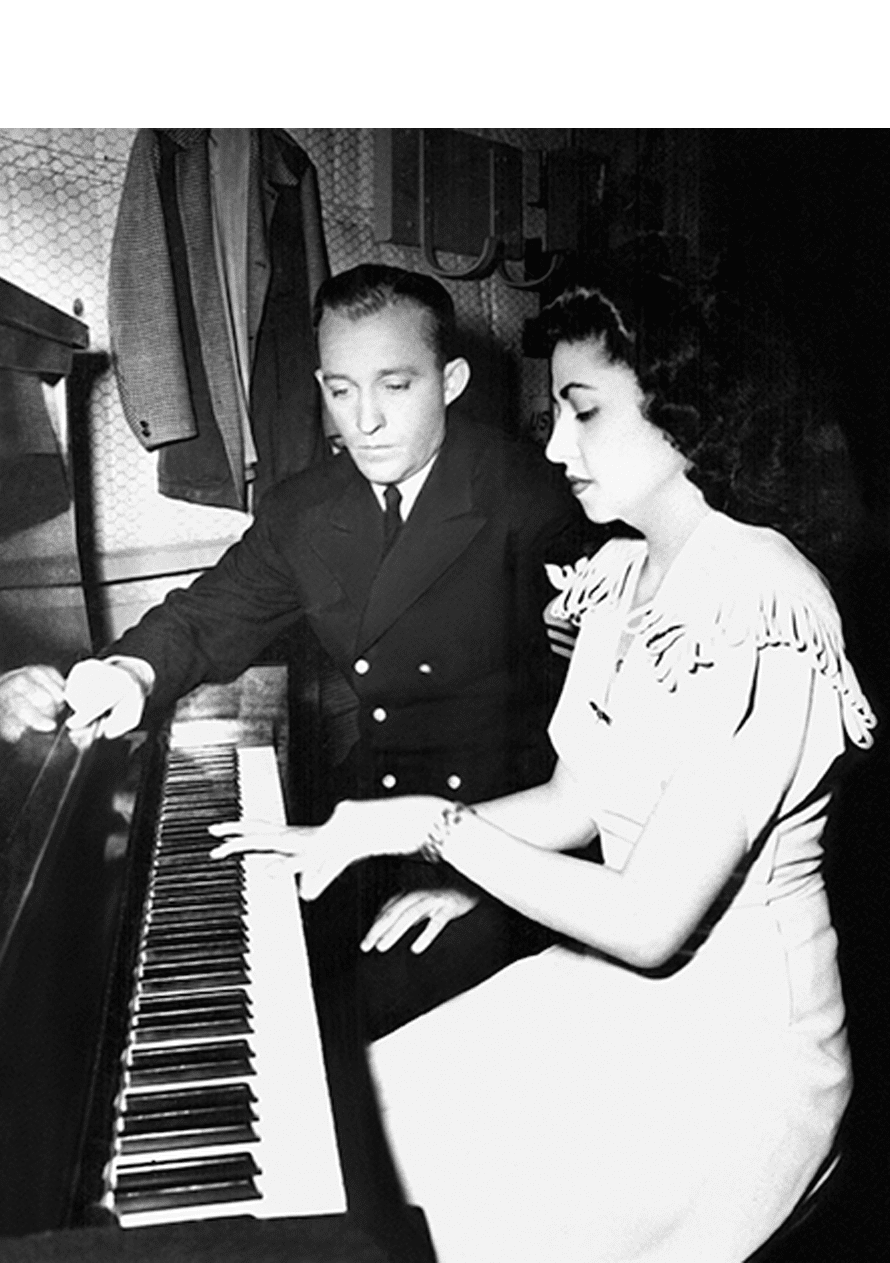Band Café Tacvba is recognized for its trend-setting and versatile style, fusing Mexican sound with influences such as rock and roll, punk, hip-hop and ska.
Rubén Albarrán, Meme (Emmanuel del Real Díaz), and siblings Joselo and Quique Rangel formed the band in Ciudad Satélite in the State of Mexico and booked their first gig at El Hijo del Cuervo in 1989. Thirty years, countless awards and over 10 albums later, it is considered by many as the most important Mexican rock band worldwide.
Their album Re (1994), which includes some of the band’s most iconic songs including “Las flores”, “Esa noche” and “La ingrata”, topped the 10 Greatest Latin Rock Albums of All Time list published by Rolling Stone magazine.10
Their concerts have been captured in two documentaries: Being: Café Tacvba (2010) by José Manuel Cravioto and Ernesto Contreras, who traveled with the band on a tour that included countries such as the United States, Spain and Japan —where they performed before Princess Hanako of Hitachi— and El objeto antes llamado disco: la película (2013), filmed in Chile, Argentina, the United States and Mexico.
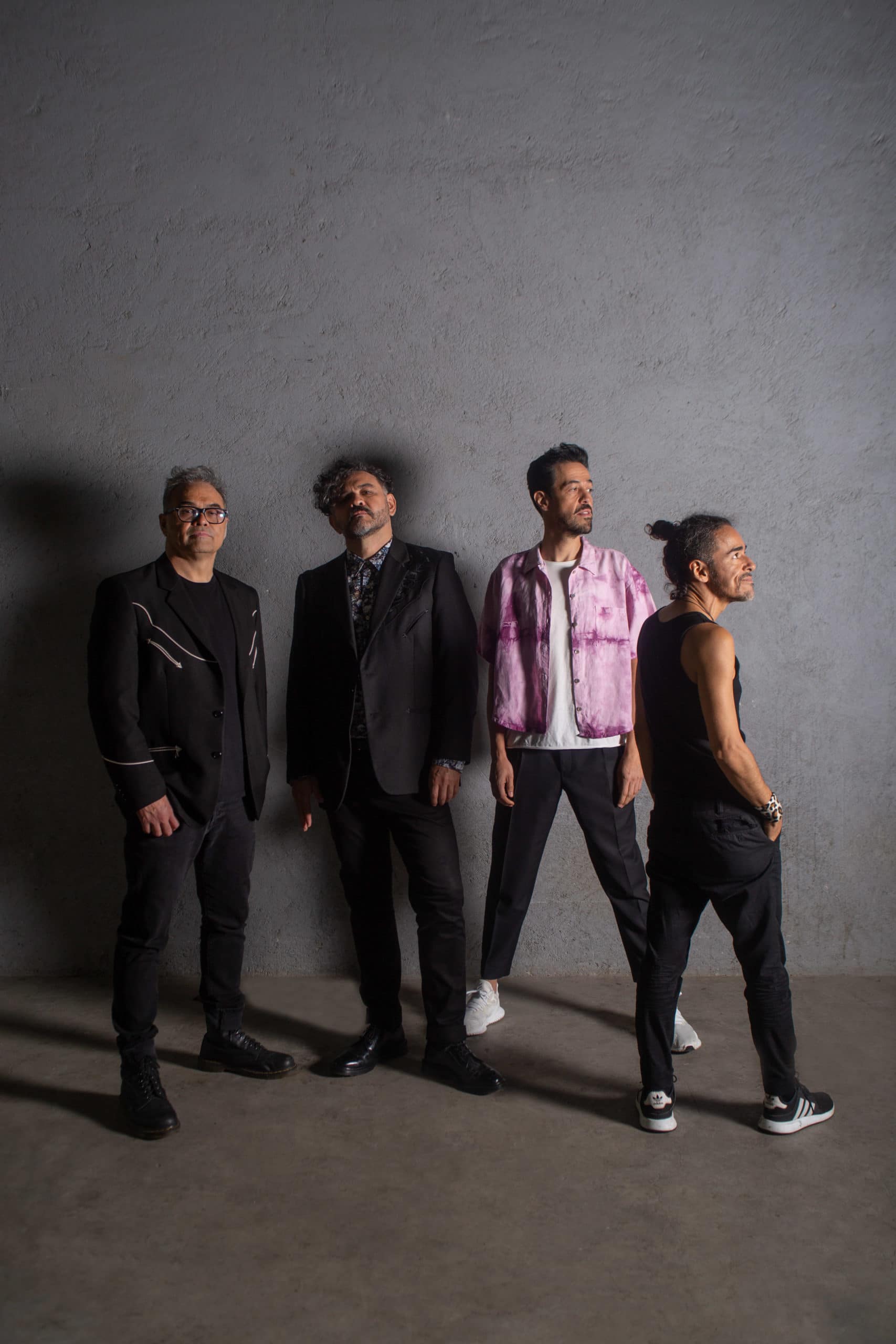
Composer Roberto Cantoral (Ciudad Madero, Tamaulipas, 1930-Toluca, State of Mexico, 2010) initiated himself from a young age to bohemian life. In 1954 he founded Los Tres Caballeros trio, where he sang, composed and made musical arrangements, together with Leonel Gálvez and the requinto guitar player, Chamín Correa. Some of his greatest successes during this stage were “El reloj” and “La barca”, songs that broke sales and popularity records in our country and abroad.
Later he composed songs such as “El triste”, “Al final” and “Quijote”, for which he earned the nickname of “The Festival Man”, and represented Mexico at the most important song contests in countries like Brazil, Japan and Greece.
In 1982 he was elected president of the Board of Directors of the Mexican Society of Authors and Composers (SACM). Among his most important achievements are the reforms to the Copyright Law, with which he managed to eradicate contracts assigning perpetuity rights.
Roberto Cantoral was five times president of the Ibero-American Committee of the International Confederation of Societies of Authors and Composers (CISAC) and his work helped create laws that strengthened copyright acknowledgement throughout the continent.
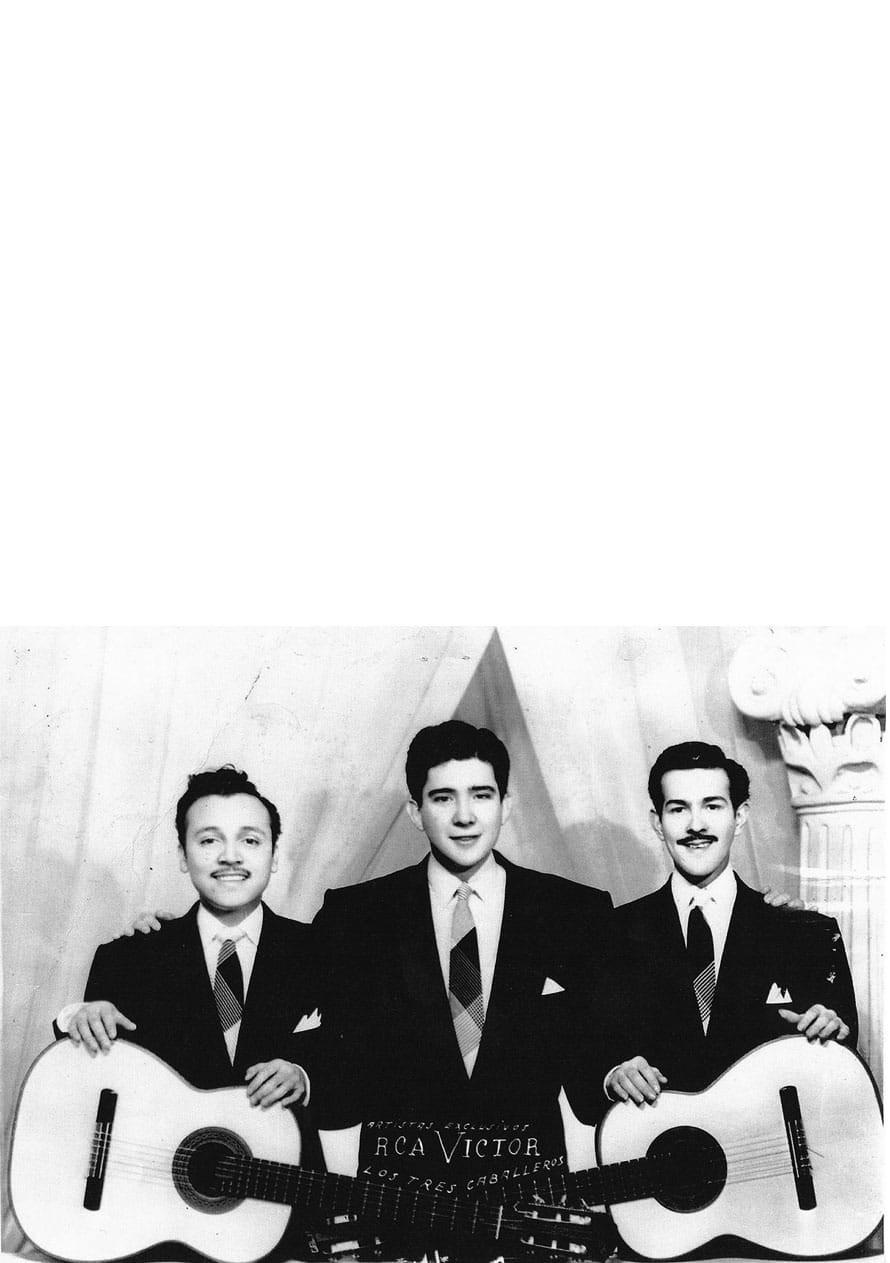

Carlos Antonio de Padua Chávez y Ramírez (Mexico City, 1899-1978) was a composer and orchestra conductor, a fundamental piece of the nationalist musical movement, renowned as a leading figure of musical art in the world.
According to experts, Carlos Chávez’s legacy to 20th century music is mainly composed of Sinfonía de Antígona (1933), Chapultepec (1935), Sinfonía india (1935), 10 Preludes for Piano (1937) and his Concerto for piano and orchestra (1938).
He is also known as an essential promoter of Mexican musical life. He founded the Symphony Orchestra of Mexico in 1928, and the National Symphony Orchestra in 1937. He was named Knight of the National Order of the Legion of Honor of France in 1932; and on May 15, 1943 he was inducted as one of the charter members of El Colegio Nacional.
Lila Downs —anthropologist, actress, composer and singer— was born in the Heroic City of Tlaxiaco, Oaxaca, in 1968. Daughter of Anita Sánchez, a Mixtec singer, and Allen Downs, a filmmaker originally from Minnesota.
During her childhood in Oaxaca, she began to sing rancheras and traditional songs; later she decided to study opera in the United States, where the cultural contrast caused her an identity crisis. She confessed that she “felt ashamed of being half American and half an indigenous Mexican”, it bothered her that her mother spoke Mixtec in public, and at one time she even dyed her hair blond.
Fortunately, music, language and roots are stronger than imposture and Lila made peace with her mixed race condition. Now she sings in Spanish, English, Zapotec and Mixtec, sticking to a commitment that has made her an ambassador of Mexican and Oaxacan culture.
She has recorded more than 10 albums, among which are: La sandunga (1999), Una sangre (2004), and Pecados y milagros (2011). Her tours take her to the most distant stages, where she always appears dressed in garments that combine typical textiles from different ethnic groups, proud to spread the culture and music of the Mexican indigenous people around the world.

Juan García Esquivel (1918-2002) was a music arranger, pianist and composer; pioneer of electronic music in Latin America and considered the father of lounge, although his style, which he called “sonoramic music”, is better known as space-age pop.
He was born in Tampico, Tamaulipas, but he preferred to say that he was born on Mars. Better known as Esquivel, ever since he was a boy he became interested in music, which he self-taught, revealing himself rapidly as a prodigy. At age 14 he was a pianist at the XEW, where he began to compose and created his own orchestra with which he performed radio musical arrangements and advertising jingles.
In the 1950s he went to New York, where he recorded Four Corners of the World (1958) under the RCA Victor label. In the United States he devoted himself to recording experimental albums while making musical arrangements for films, TV series and programs such as The Flintstones, The Bionic Woman and Charlie’s Angels, among others, which became classics of popular culture. Although he never won a Grammy, he was nominated six times for compositions like “Mucha muchacha” or “Mini skirt”.
Admired by Henry Mancini, Frank Sinatra and Walt Disney, Esquivel enjoys prestige as one of the best musicians of his time; currently respected as a cult artist, whose influence has been admitted by artists such as Matt Groening, Bono and Quentin Tarantino.
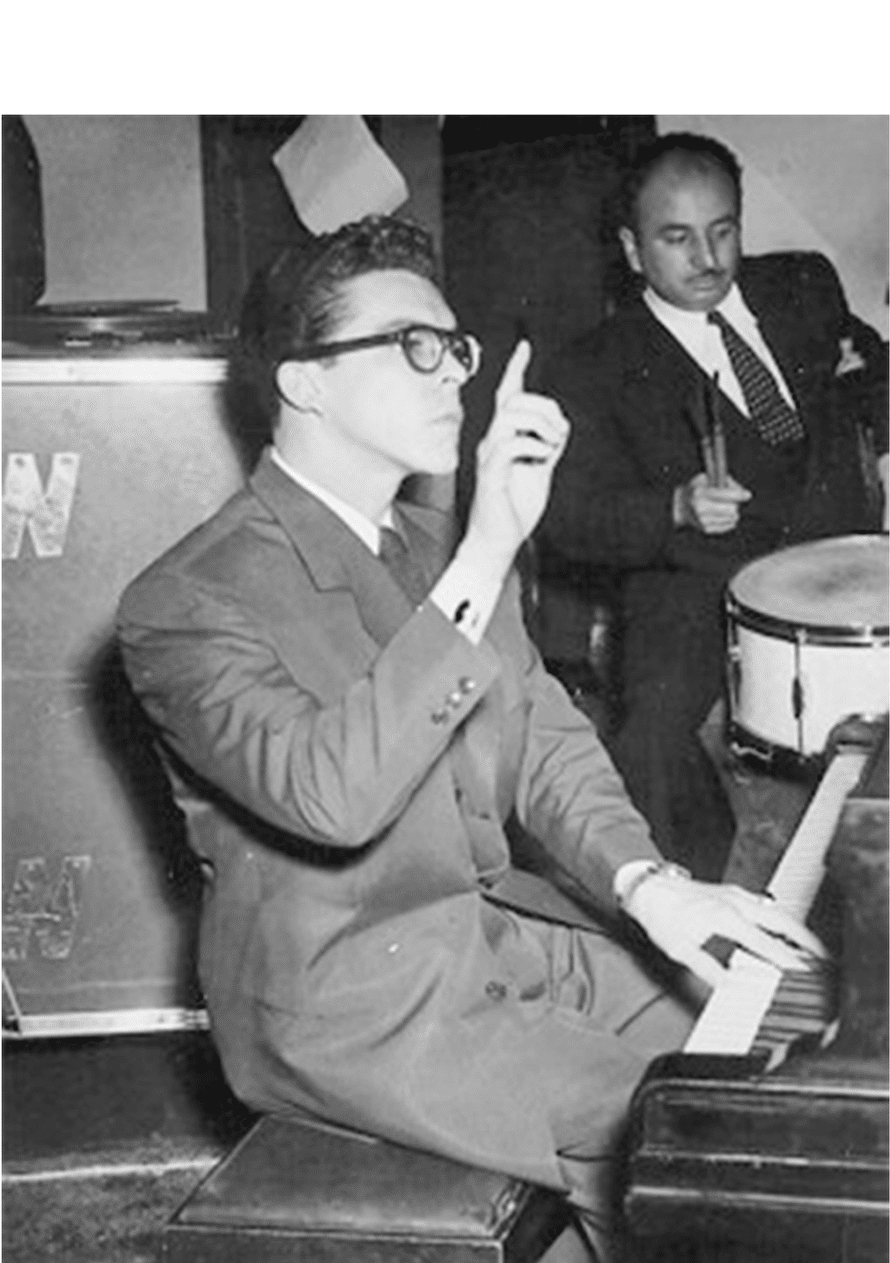

María Grever (León, Guanajuato, 1884-New York, United States, 1951), composer and orchestra conductor, holds the distinction of being the first Mexican woman to achieve professional success in both popular and concert music.
She studied poetry, singing and various musical instruments in Mexico, Spain and France, where she took classes with Claude Debussy. Her talent was ahead of her time. Her first song, “A una ola” —which she composed at age 18— sold more than three million copies. Later she moved to New York, where she became obsessed with promoting Mexican music and talent.
She met tenor José Mojica, who described that on his arrival in New York he had met many Mexicans looking for an opportunity as opera singers, but most of them returned to Mexico without having achieved their goal. However, he was lucky to run into María, for whom impossible was not an option. The composer found a way to sneak into the offices of those who eventually represented her.
Years later, Mojica —by then famous— recorded “Júrame”, a song that represented the composer’s international projection. She was the author of more than 800 songs, including “Cuando vuelva a tu lado” and “Muñequita linda”, in addition to pieces for concerts and films.
María Grever is known for having a fundamental role in opening up the borders for Mexican musicians and performers.
Fernando Savater once claimed that José Alfredo Jiménez was “the best poet in Mexico, with the forgiveness of Octavio Paz”,27 and clarified that the phrase was not his but of French writer Jean-Paul Sartre, who once sang Jiménez’s verses “Vámonos, donde nadie nos juzgue...” to Paz, with all the pain in his heart.
José Alfredo Jiménez (Dolores Hidalgo, Guanajuato, 1926-Mexico City, 1973) has gone down in history as “the poet of desolation”. For decades, his lyrics have accompanied broken hearts, those who suffer, those in love and those who, despite marginalization, continue to sing, still convinced that “life is worth nothing”.
The lyrics of “Hijo del pueblo” renewed the ranchera genre and his 280 songs make up a living and eternal heritage that spreads in the echoes of mariachis, whether in Garibaldi or in any corner of the world where the chords of “El rey”, “En el último trago”, “Si nos dejan”, “Que te vaya bonito” or “Un mundo raro” are heard.

For over 40 years, Juan Gabriel brought his beloved Mexican music to millions, transcending borders and generations. To many Mexicans and people all over the world, his music sounds like home.28
Barack Obama
According to the records of the Mexican Society of Authors and Composers (SACM) every 40 seconds, one of Juan Gabriel’s (1950-2016) songs of is heard in some corner of the world.
“The Diva of Mexico” made his life an ode to resistance. As Alberto Aguilera Valadez he overcame family abandonment, misfortune and iniquity. Parácuaro, Michoacán, was his birthplace, but the streets of Ciudad Juárez were his up-bringing and school.
In jail he acknowledged the freedom of music and became Juan Gabriel, the phenomenon that passed over all taboos to rise as a standard of dissidence: while his passionate style captivated millions, his mere presence challenged stereotypes from machismo to classism ideas.
Under his authorship there are 1,800 registered songs —sometimes corny, sometimes melodramatic, always endearing— that evoke love, heartbreak, the homeland and the joy of living. The rights to those songs were waived over 1,500 times to be interpreted by singers who recorded them even in English, Turkish, Japanese, German, French, Italian, Tagalog (language of the Philippines), Greek, Papiamentu (from Curaçao) and Portuguese.29
His death represented an international mourning.
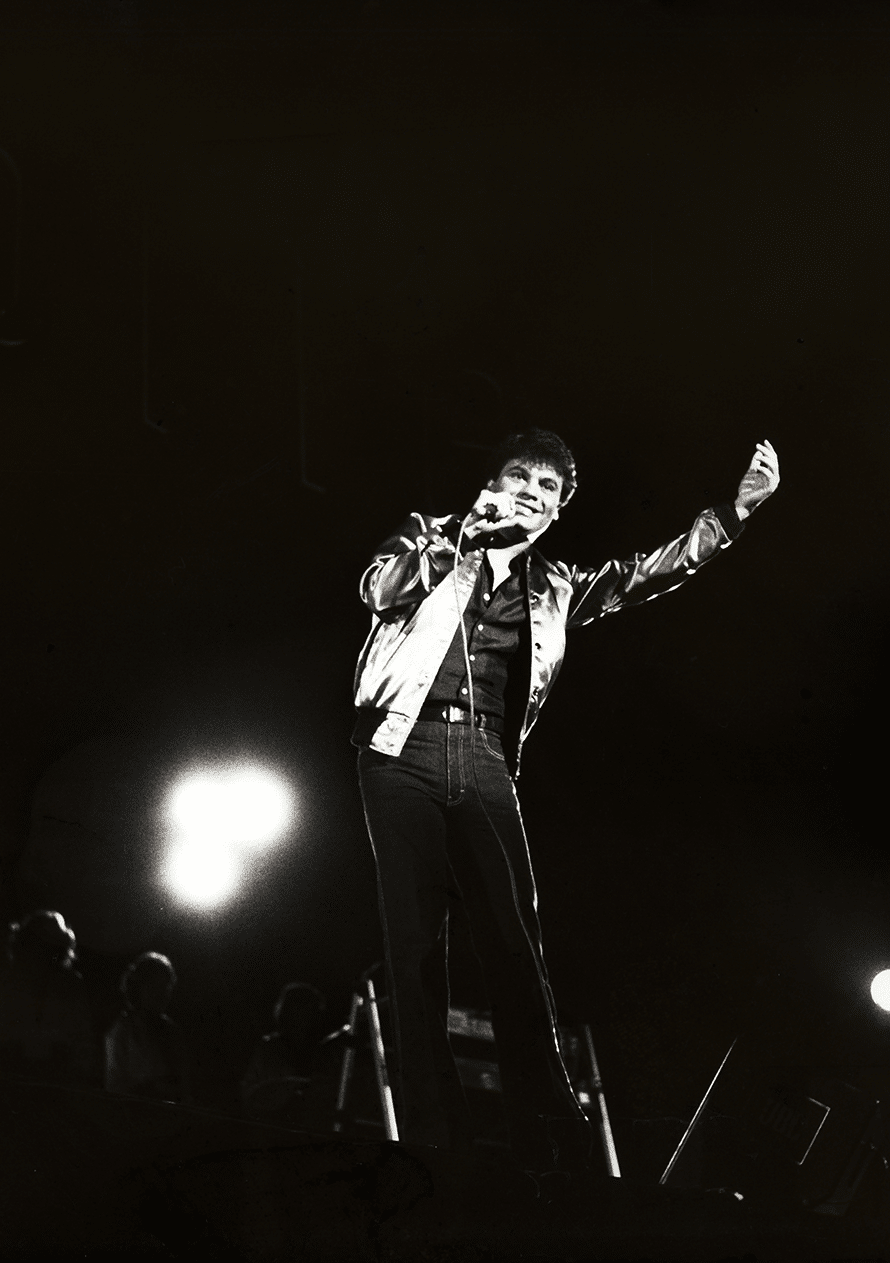
Ángel Agustín María Carlos Fausto Mariano Alfonso del Sagrado Corazón de Jesús Lara Aguirre y del Pino (1900-1970), better known as Agustín Lara, has been one of the most prolific Mexican composers and, according to writer Ricardo Garibay, “an essence of Mexican soul”.
Native of Veracruz, self-taught and with an out-of-this-world musical vocation, at 13 years old he worked as a pianist in a brothel and composed songs for every woman he met until he rose to prominence as the distinguished bolero singer of a whole era and a legendary womanizer.
“The Golden Thin Man”, as he was known, counts over 700 amongst his registered songs; including the most famous, known and sung all over the world, “Solamente una vez”, “Farolito” and “Granada” —the hymn adopted by the city of Alhambra.
In 2015 the Mexican Society of Authors and Composers (SACM) awarded him the Juventino Rosas posthumous recognition, which honors deceased authors whose work has crossed borders, transcending time and remaining valid until our days for the glory of Mexico in the world.
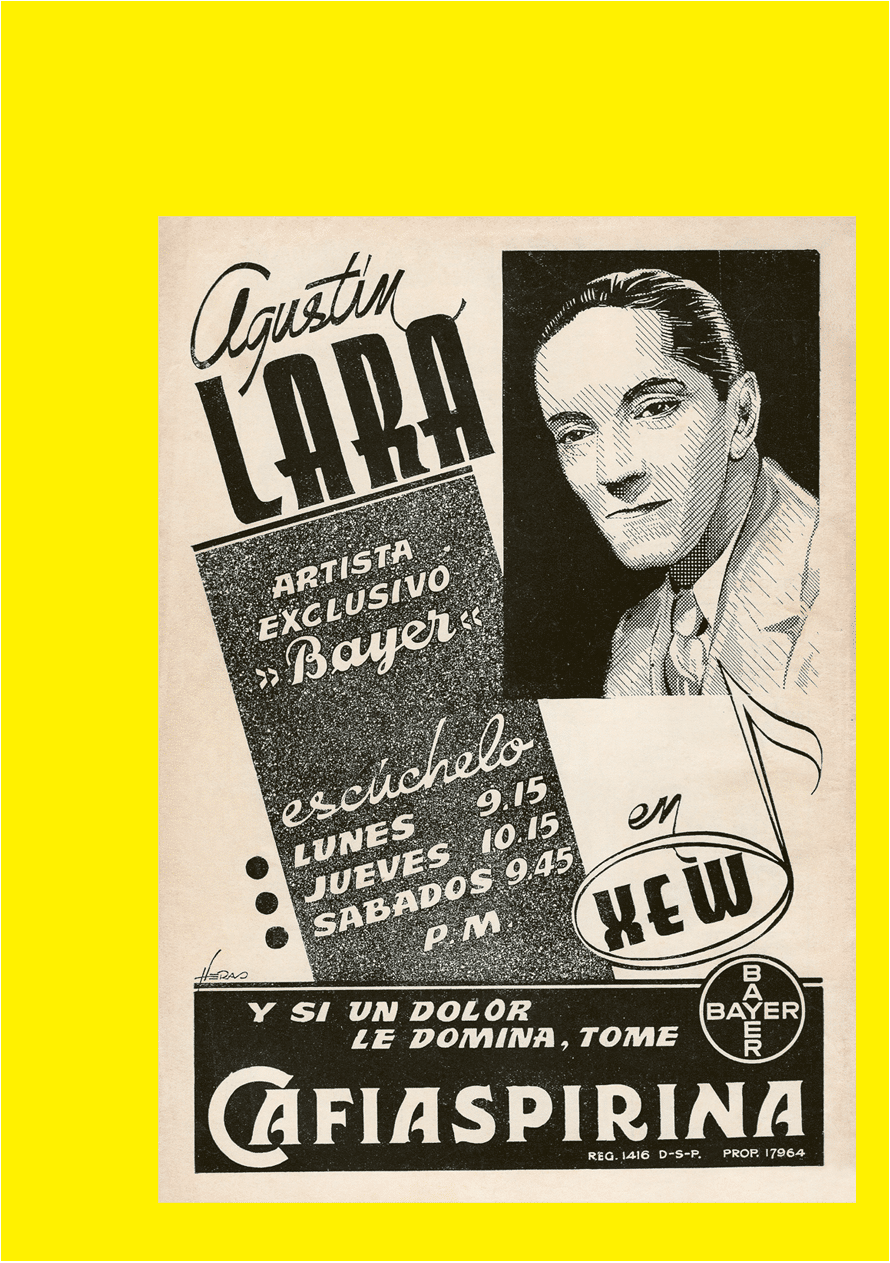
Los Panchos are one of the most important musical phenomena in the history of Mexico. Alfredo Gil, Chucho Navarro and Hernando Avilés were part of a trio that emerged within the framework of the New York artistic scene of 1944. In that same decade the group went on an extensive tour, spreading what in the end would be called a “Mexican style” bolero.
Although their initial repertoire also included ranchera songs, huapango and son huasteco, they consolidated bolero as the most popular genre of the time, which to this day continues to be the greatest influence of contemporary composers.
Their passage through each country left a wake that inspired many, imposing the model of romantic trios that invaded the music scene emulating “the most perfect trilogy of America”, an immortal group that left a legacy of approximately 1,122 songs and 33 films.
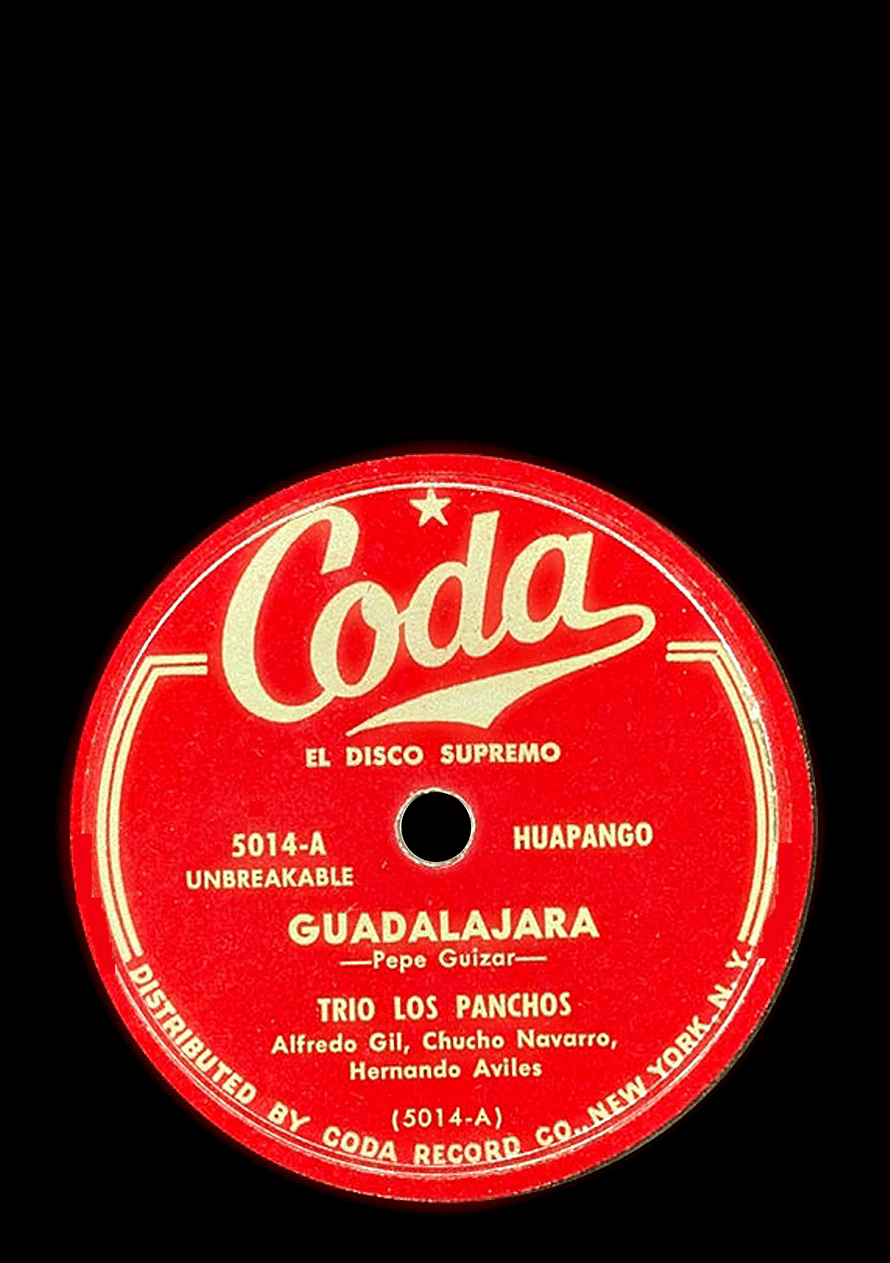
Although born in San Juan de Puerto Rico, Luis Miguel (1970) is known worldwide as “The Sun of Mexico”, whose over 35-year professional experience has established him as one of the most successful performers in the musical history of Latin America.
He began his career in 1982, as a child singer who seduced the audience with his privileged voice and a remarkable mastery of the stage. He grew up sourrounded by concerts, tours and recordings, in the context of a country that went from managing wealth to coping with financial crisis, and found a haven in music and television shows. Therefore, the Mexican audience fell in love with him, and he received his naturalization letter from former president Carlos Salinas de Gortari in 1991.
Luis Miguel has approximately thirty record productions in which he has experimented with genres that include pop, ballad, bolero, tango, big band and mariachi music. To date, he has sold over 100 million records worldwide and in 2011 he was proclaimed as the best Latin American artist of the last 25 years according to Billboard magazine.
His life —worthy of a television drama— was brought to TV screens by Gato Grande Productions, through Luis Miguel, la serie (Netflix, 2018), resulting in a new record of his songs played on digital platforms.
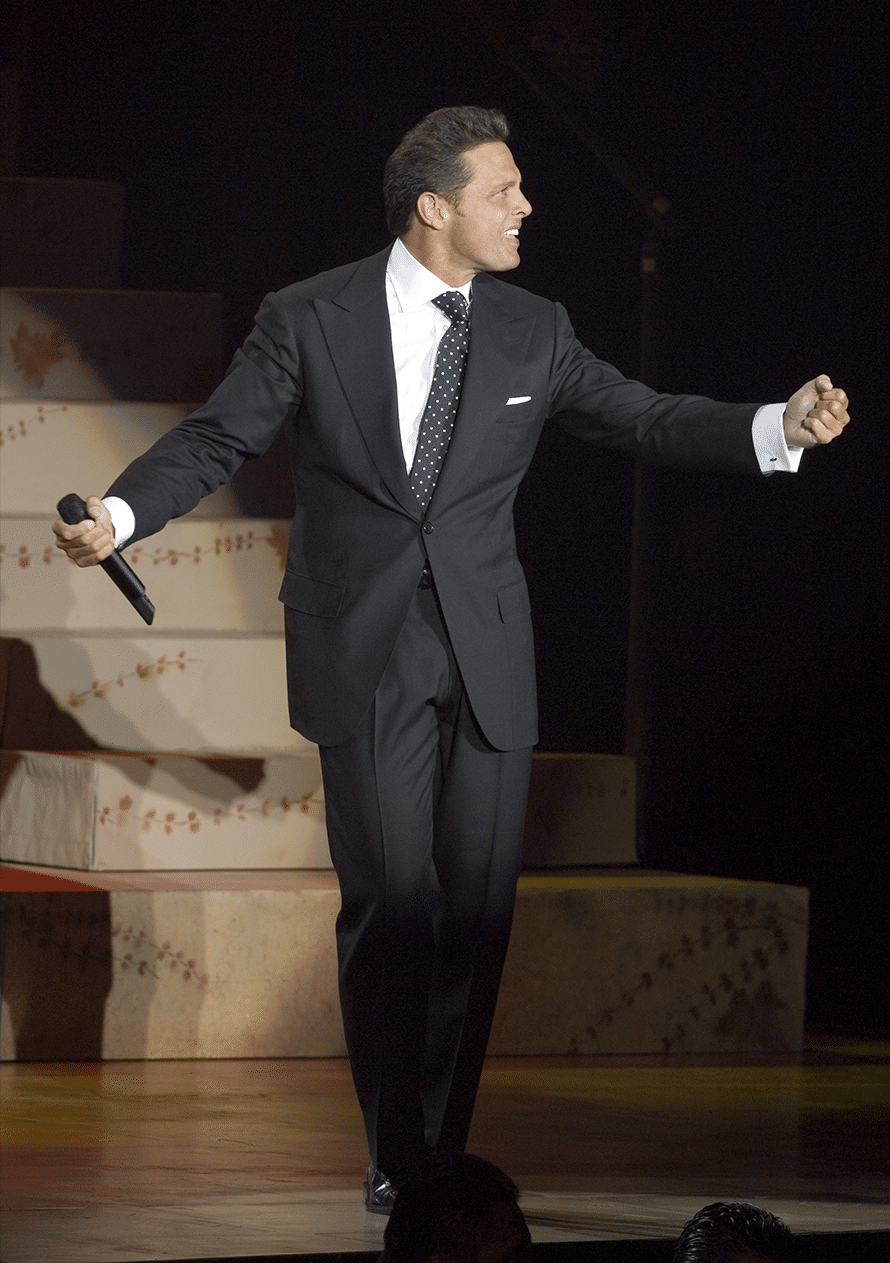
Born in Yucatán, land of trova singers, Armando Manzanero (1935) is the author of more than 800 songs that have been translated into so many languages that he says he no longer remembers them all. Thanks to his work as a singer, songwriter, composer, musician and music producer, his name is among the great Latin American composers.
Among his hits there are more than fifty internationally famous songs, such as “No”, “Adoro”, “Somos novios”, “Esta tarde vi llover” or “Contigo aprendí”.
From Chavela Vargas to Frank Sinatra, passing through Elis Regina, Raphael, Los Panchos, Elvis Presley, Tony Bennet, Andrés Calamaro and many others, Manzanero’s songs have been interpreted with an infinite number of vocal ranges and musical arrangements, entrenched in the emotional memory of millions.
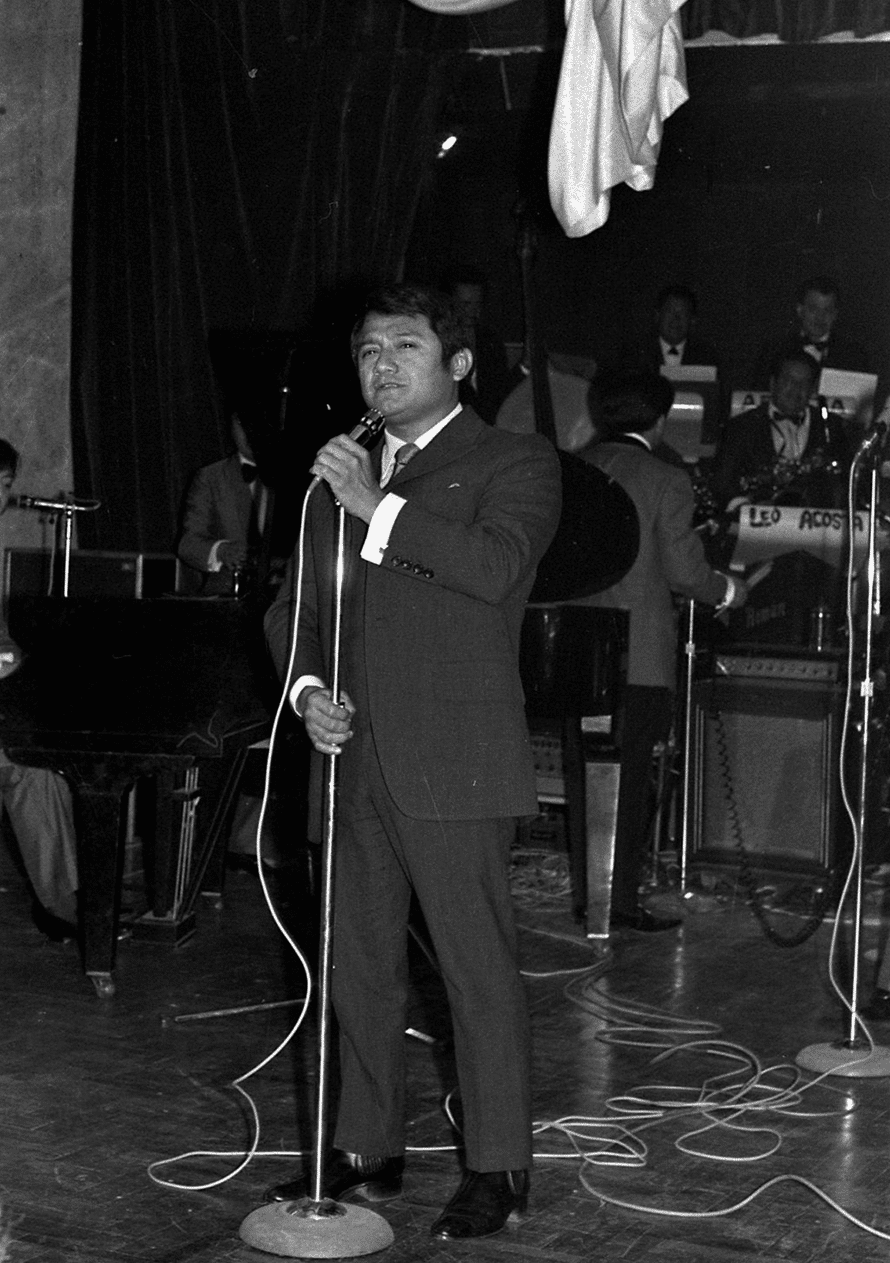
José Pablo Moncayo García (Guadalajara, Jalisco, 1912–Mexico City, 1958) is one of the most important representatives of Mexican musical nationalism of the 20th century,34 creator of “Huapango”, a work that has earned the title of Mexico’s second national anthem.
Besides being a composer, percussionist, music teacher and conductor, Moncayo was a lover of Mexican landscape. As an amateur mountaineer he climbed the Popocatépetl, the Iztaccíhuatl and the Pico de Orizaba, collecting images and atmospheres that he managed to capture in his compositions.
It was Carlos Chávez who asked him to carry out musical research in Veracruz. Thanks to this assignment, the composer studied songs such as “Ziqui ziri”, “Balajú” and “El Gavilancito”, which influenced the creation of “Huapango”, premiered on August 15, 1941 at the Palace of Fine Arts, with the Mexican Symphony Orchestra under the baton of Carlos Chávez. Within his musical legacy, masterpieces such as “Muros verdes”, “Tierra”, “Hueyapan” and “Amatzinac” are also remembered.
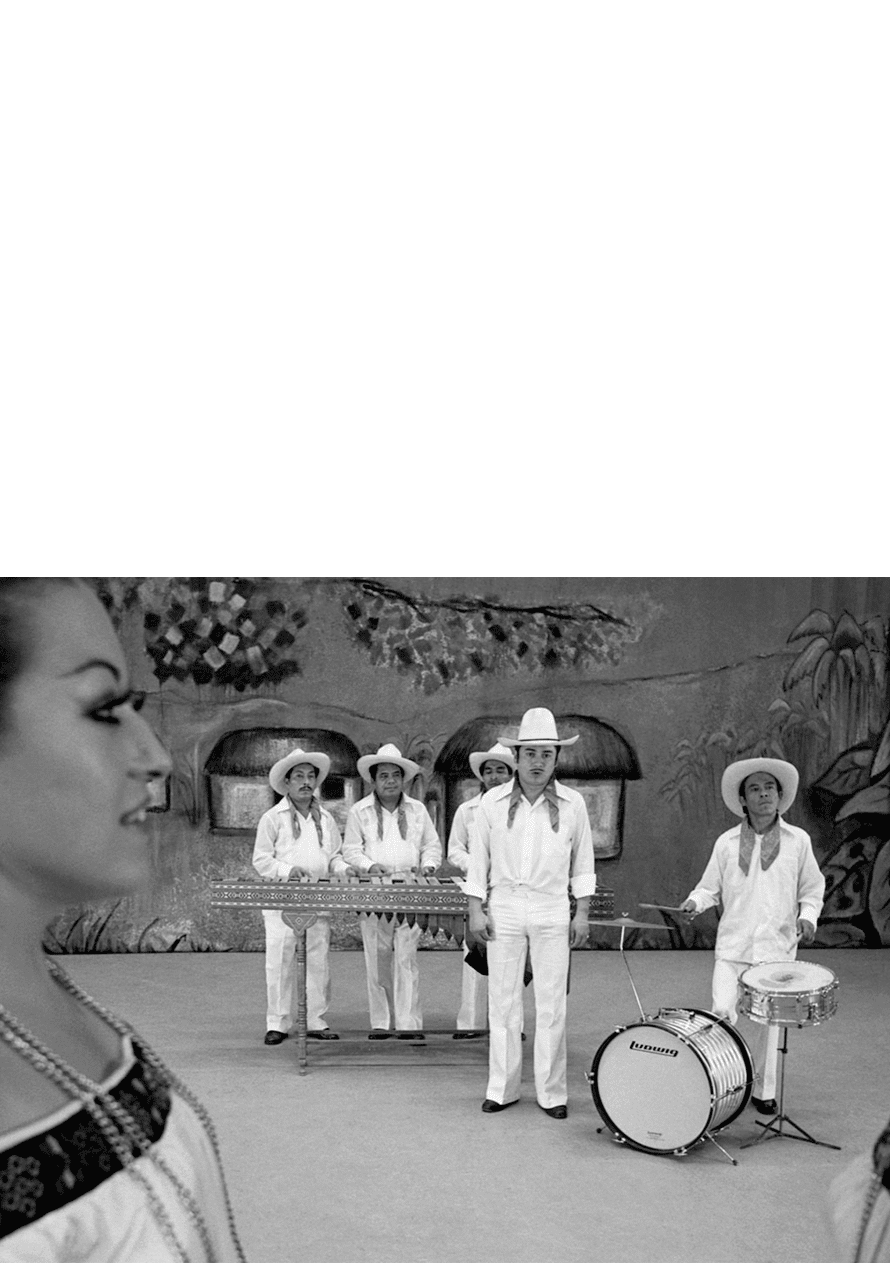
As conductor, Alondra de la Parra (1980) has been at the head of over 75 orchestras around the world, including the most prestigious in United States, France, Germany, Japan, Brazil, Sweden and Russia, as well as the London Philharmonic Orchestra, the Cameristi della Scala at Milan, and the Orquesta Nacional of Spain. She was the first Mexican woman to be invited to conduct in New York and has been named Official Cultural Ambassador of Mexico.
In 2004 she founded the Philharmonic Orchestra of the Americas in New York, to promote both Mexican and Latin American classical music. With this orchestra she recorded My Mexican Soul, her first album, and undertook an educational project with children from public schools in the Bronx and Harlem.
In Mexico, she launched the Armonía Social program, which has helped many children find a haven in music by working with children and youth orchestras such as that of Ciudad Nezahualcóyotl; Tlahuitepec, in Oaxaca; Ciudad Renacimiento, in Guerrero; and the Children and Youth Orchestra of Mexico.
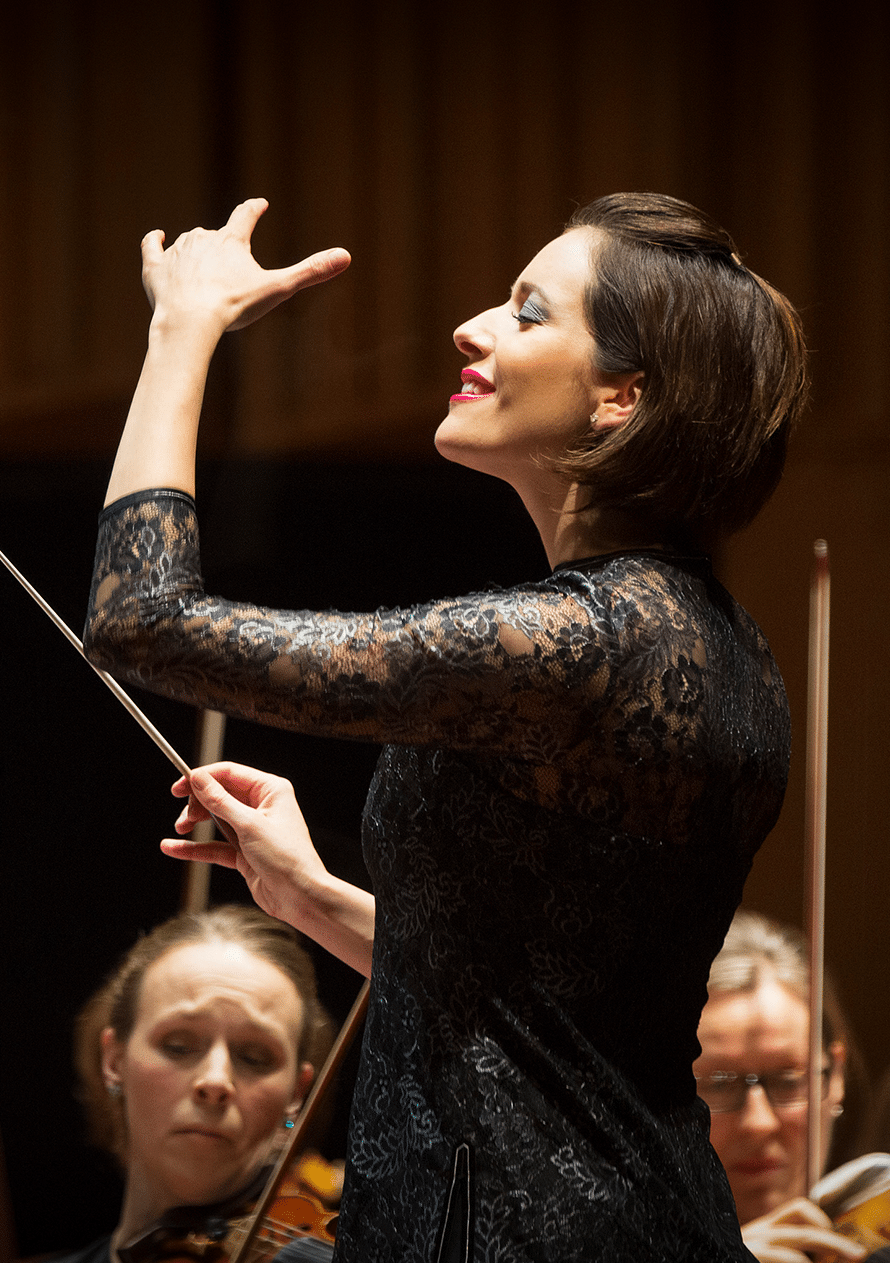
Manuel María Ponce (Fresnillo, Zacatecas, 1882–Mexico City, 1948) is an omnipresent name in Mexican musical history. A pioneer of the nationalist school, he left a legacy that includes one of the most extensive, and beautiful musical works. He innovated and influenced the music and composition scene of his time.
He wrote for voice, piano, guitar, violin and cello, as well as chamber and orchestral music.
One of his works that made him famous around the world was the song “Estrellita”, which acquired such celebrity that many believe it is a folk melody.In addition to composing, he was an excellent pianist and dedicated much of his life to teaching. He was director of the National School of Music and received the National Prize for Arts and Sciences in 1947.
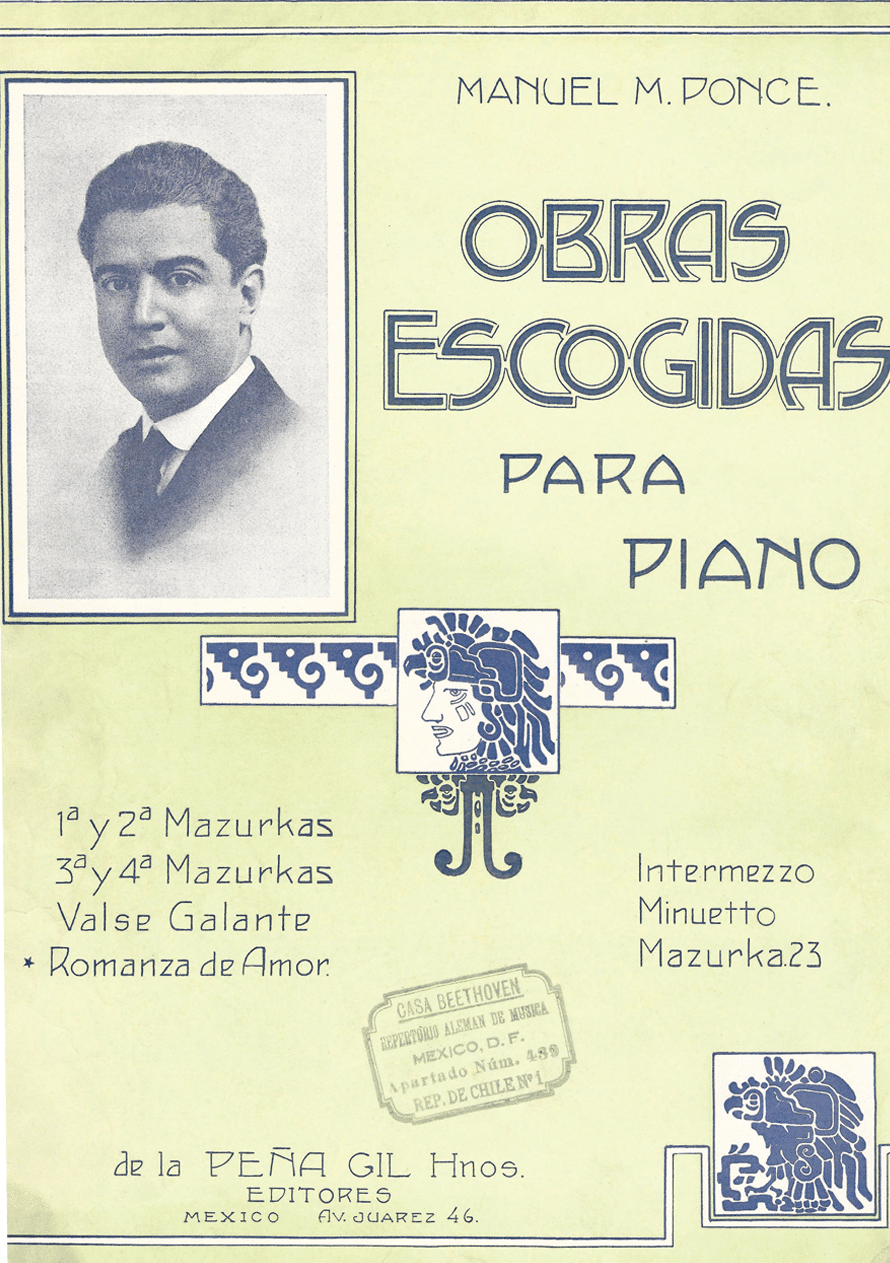
Like Rostropovich, Carlos Prieto is a true champion of the cello.39
Yo-Yo Ma
Carlos Prieto (Mexico City, 1937) has the spirit of a Renaissance man: he is an engineer and economist —graduated from MIT—, writer, researcher, diplomat, academic and one of the most respected cellists in the world.
He began playing the cello at age four, but his learning began earlier, in the womb, from where he heard the rehearsals of the string quartet his parents, his grandfather and his uncle had put together. He says that ever since then, his mother decided that he would be a cellist.
He is a tireless promoter of Mexican and Latin American composers. Thanks to his initiative, countless works have been written for cello, which he has presented in the most prestigious music halls in the world and with orchestras such as the London Royal Philharmonic, the American Symphony Orchestra in New York, the Berlin Symphony Orchestra, the Moscow Chamber Orchestra, the Spanish National Orchestra, among many others.
He is the only musician enrolled in the Mexican Academy of Language, acknowledged for his work as a researcher and author of more than ten books, among which are The Adventures of a Cello (2011) and Throughout China with the Cello (2009), with a foreword by Yo-Yo Ma. His works have been translated into English, Russian and Portuguese.
Preserving the centenary tradition of the family string quartet, he is a member of the third Prieto Quartet, along with his brother Juan Luis and his children, violinists Juan Luis Jr. and Carlos Miguel Prieto —who is also considered the leading Mexican conductor of his generation, appointed Conductor of the Year 2019 by Musical America.
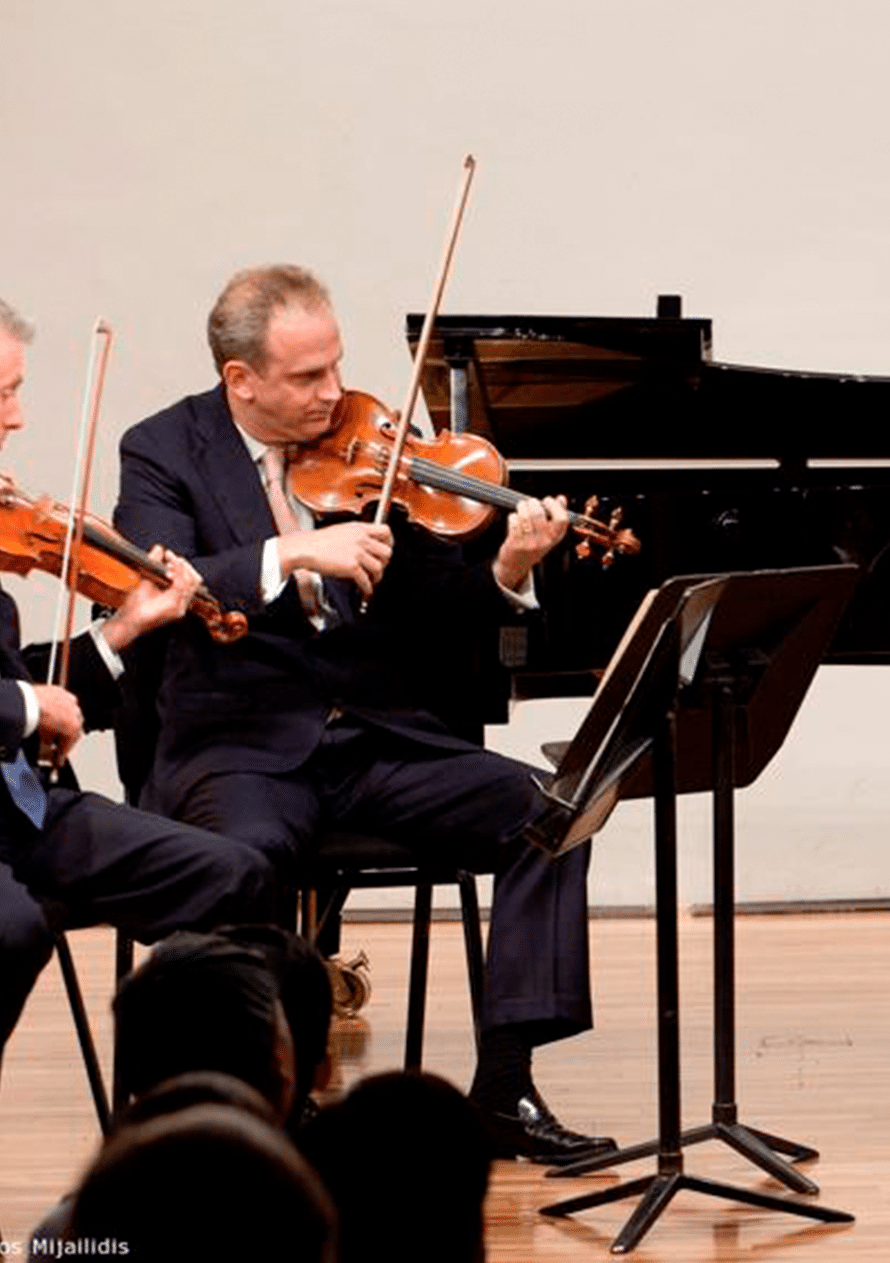
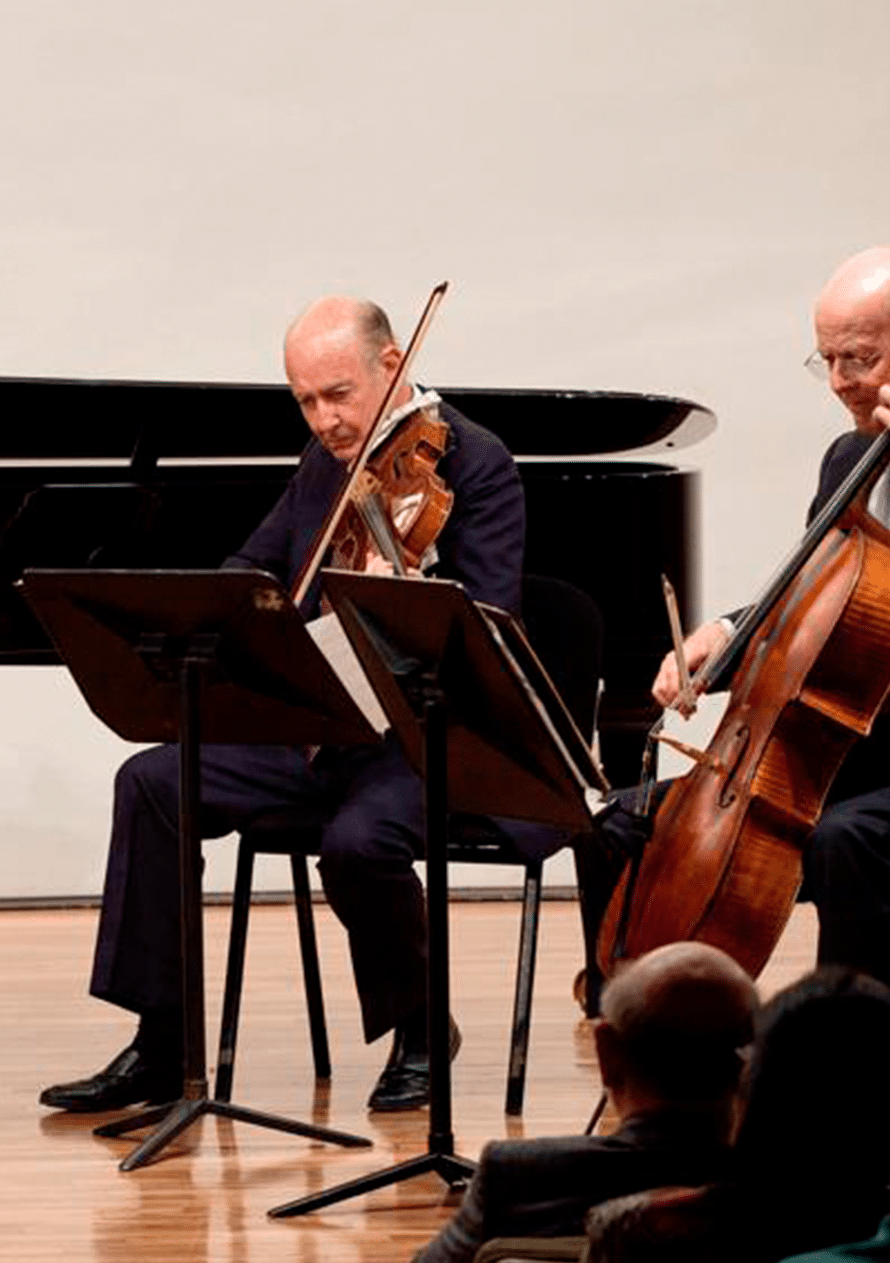
Silvestre Revueltas (Santiago Papasquiaro, Durango, 1899–Mexico City, 1940) occupies a privileged place among Mexican composers of the 20th century. He had a sensitive ear to the voices of our land and an amazing ability to recreate them in works that place him as a bold avant-garde composer, compared at the time to Stravinsky.
In his collection one can find titles such as “Tierra pa’ las macetas” or “Dúo para pato y canario” that collect the echoes of popular announcements. His work has a purely Mexican character, but clearly differentiated from the typical nationalism twists that his contemporaries cultivated.
In addition to his chamber pieces, he bequeathed a solid symphonic work, which earned him prestige in the international music scene. Among his scores that are acclaimed today are “Sensemayá”, a symphonic poem inspired by the homonymous text by Nicolás Guillén; “Homenaje a Federico García Lorca”, written upon finding out about the Granadan poet’s murder; along with “Janitzio” and “La noche de los mayas”, works that are frequently performed by the best orchestras of Mexico and the world.
He was the first of a dynasty of artists, all children to a mother who foretold their destiny, expressing that she wanted to bear a musician, a painter and a poet. Thus, all the wonders of the Revueltas family were born: Silvestre the musician, Fermín the painter and muralist, Consuelo the painter, Rosaura the actress and writer, José the writer, and Agustín the artist.
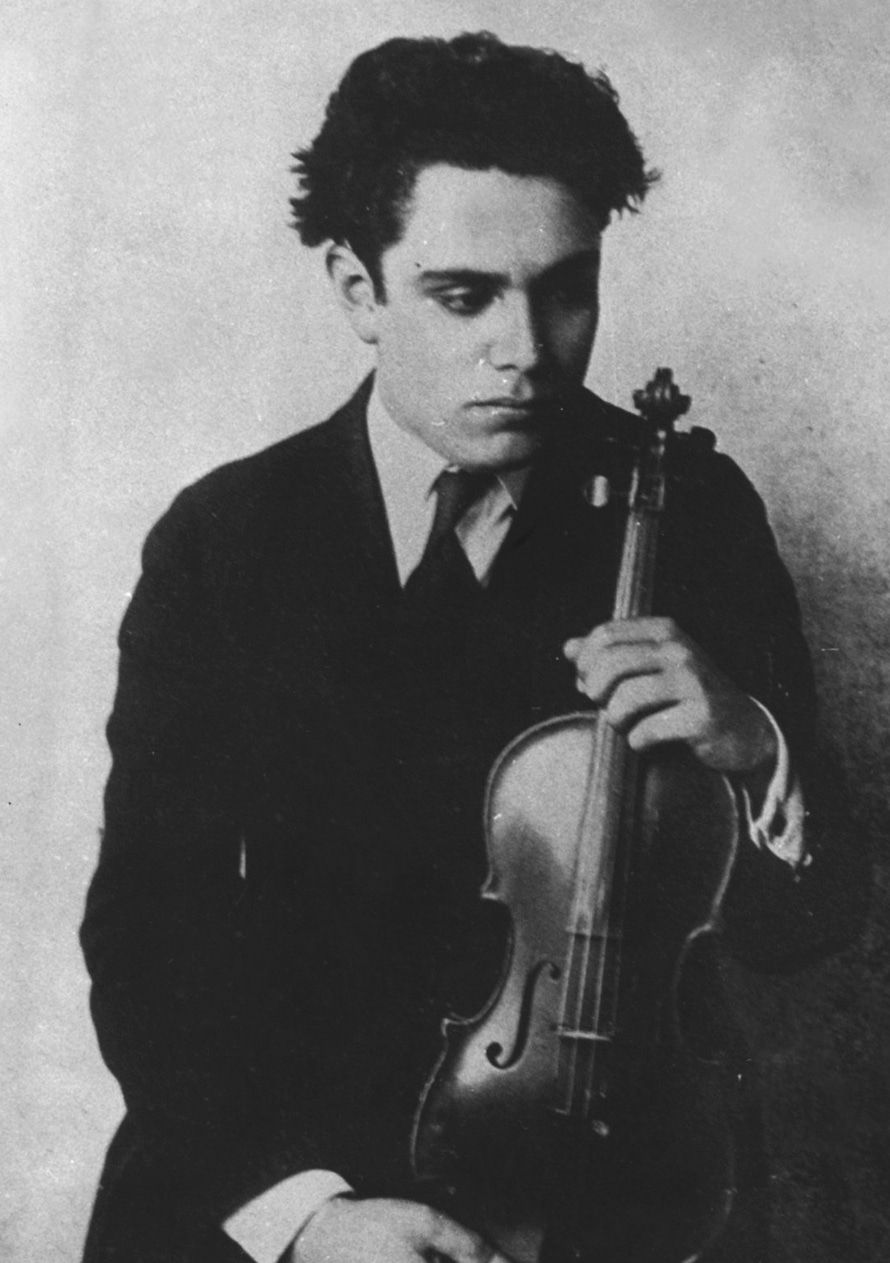
Playing in front of 80,000 people in Glastonbury, more than an achievement, to us this represented a triumph for instrumental music […] the typical format of a rock band is not necessary to succeed.46
Rodrigo Sánchez
Rodrigo Sánchez (1974) and Gabriela Quintero (1973) make up this duet of electroacoustic guitars that has been conquering foreign lands for two decades with its folk-metal-jazz-flamenco sound blend, which has caused a sensation at the Glastonbury Festival, the Radio City Music Hall in New York and even the White House in Washington, DC.
They met as teenagers, in their native Ixtapa Zihuatanejo, and began playing in a thrash metal band. One day they decided to abandon the dream of the garage band to travel around Europe with two guitars on their shoulders and the “blood pact” of not accepting any jobs that did not involve music. So they spent time in Dublin, playing in streets and pubs, until musician Damien Rice helped them launch their career in Ireland.
Eight records later —among which Mettavolution (2019) and re-Foc (2002) stand out— and thanks to their brilliant technical execution and fusion style, they are a phenomenon in Europe and the United States. They have their own customized edition of Yamaha guitars, they have participated in soundtracks of projects such as Pirates of the Caribbean and Breaking Bad, and their story was taken to the big screen in documentary For Those About to Rock (2014) by Alejandro Franco.

José Juventino Policarpo Rosas Cadenas (1868–1894) was born in Santa Cruz de Galeana, Guanajuato —today, Ciudad Juventino Rosas— and showing great musical talent as a child. Making the most of these skills, Don José, his father, created a trio with his own children and earned money playing at parties and baptisms, however, they reaped more applause than income.
Later, at fifteen years old, Juventino entered the orchestra of famous singer Ángela Peralta, but during a promising tour, a cholera epidemic claimed the lives of several members. After many setbacks, he focused on composition.
In 1887, his performance at a festival commemorating the Battle of Puebla, at the National Theater, won him the applause of none other than Porfirio Díaz. Dedicated to the president’s wife, he composed “Carmen” and, in gratitude, he received a grand piano from the presidential family that he had to sell immediately to pay off his debts.
He also composed polkas (such as “Flores de México”), mazurkas, marches and waltzes, including “Sobre las olas”, a piece that gained worldwide fame while its author remained anonymous.
Due to financial pressure, he sold the rights to his iconic work to the publishing house Wagner & Levien, for a mere forty-five pesos. The authorship of the waltz was even attributed to Strauss, until it was discovered that a Mexican, who managed to receive recognition but never royalties, had composed it.
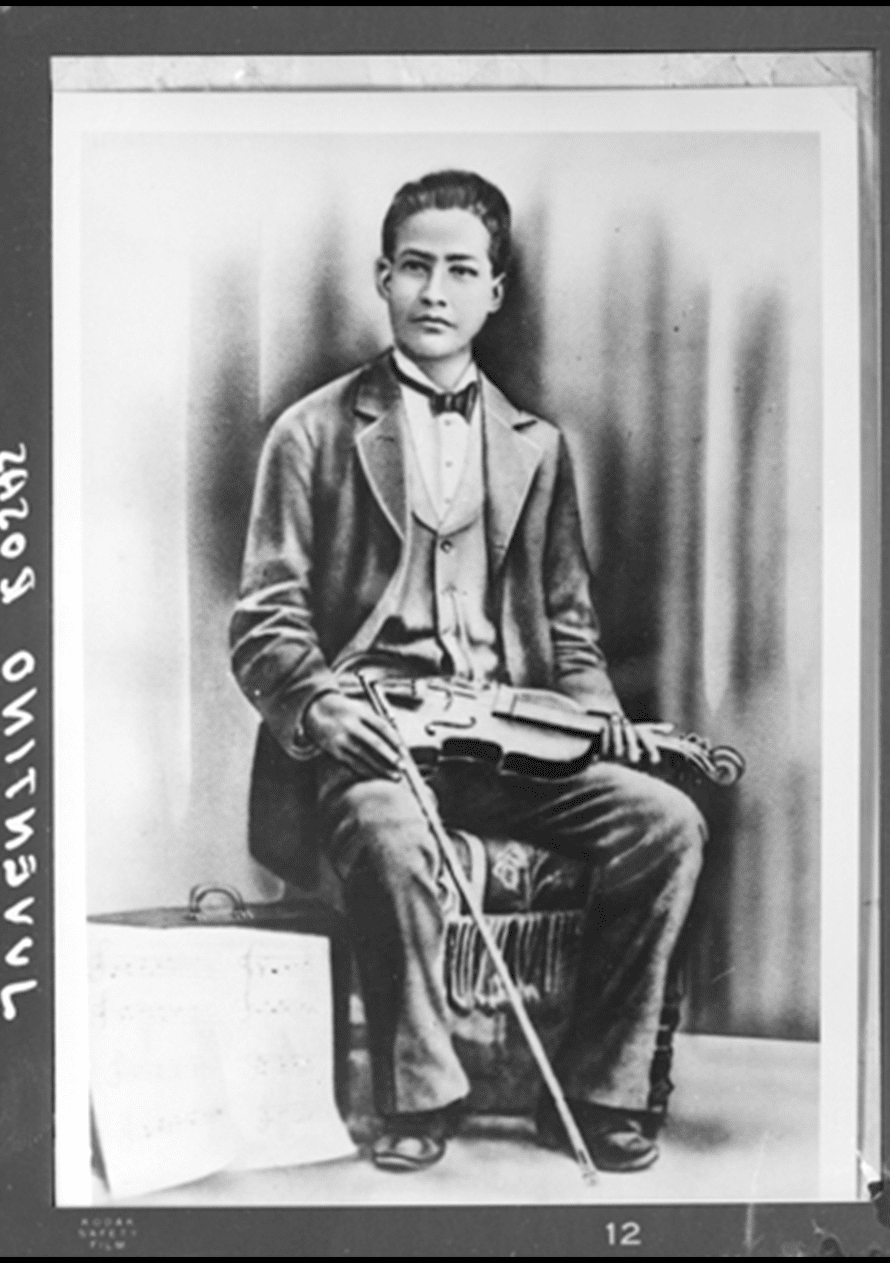
Carlos Santana (Autlán de Navarro, Jalisco 1947) is considered one of the greatest guitarists of all time. His name is inducted, next to the great legends of music, into the Rock and Roll Hall of Fame, not only for his mastery with frets, but also for having crossed the border that divided rock from Latin influence.
He built up his musical personality from an early age. His father was a mariachi musician and his brother a guitarist, so he started playing the violin and guitar at age five, in his native Jalisco. During his teenage-years, in Tijuana, he perfected his technique under the tutelage of Javier Bátiz, and at 22 years old he barged into the Woodstock stage, in front of more than 400 thousand people who went crazy to the rhythm of Evil Ways.
In 2000 his album Supernatural broke several sales records and in one night he won nine Grammy Awards, surpassing Michael Jackson’s record.
He is known as “The Guitar Shaman” for promot-ing the idea of music as spiritual medicine. True to his Chicano heritage, he rescues the myths of his ancestors to make them sacred, he acknowledges himself as a devotee of the Virgin of Guadalupe and a rebel in which the spirits of “Che” Guevara, Pancho Villa and Gerónimo converge, convinced that a “revolution without violence” is possible.

Originally from Orizaba, Veracruz, Francisco Gabilondo Soler (1907–1990) “is not only the most important and influential figure in the history of children’s music in Mexico and the Spanish-speaking world”, says musician and writer Gerardo Australia, “he is an essential model of popular culture that identifies us as Mexican and Latin American”.52
He was a child who hated being an adult. A lover of astronomy, linguistics and music, in 1934 he became “The singing cricket” and for three decades he represented the consciousness of several generations to whom he spoke “in the ear” from the frequency of the XEW radio station.
He was preyed on by Walt Disney, who futilely tried to acquire the rights to his characters and music several times. They only collaborated in 1963, when director Carlos Amador added several cartoons created by Disney in the film about the composer’s life.
He was the author of 240 songs, apparently simple, of which lyrics and melodies hypnotized children and adults, including “El Chorrito”, “La marcha de las letras”, “El ratón vaquero”, “El negrito bailarín” and many others that are still listened to in Mexico, the United States and Latin America.
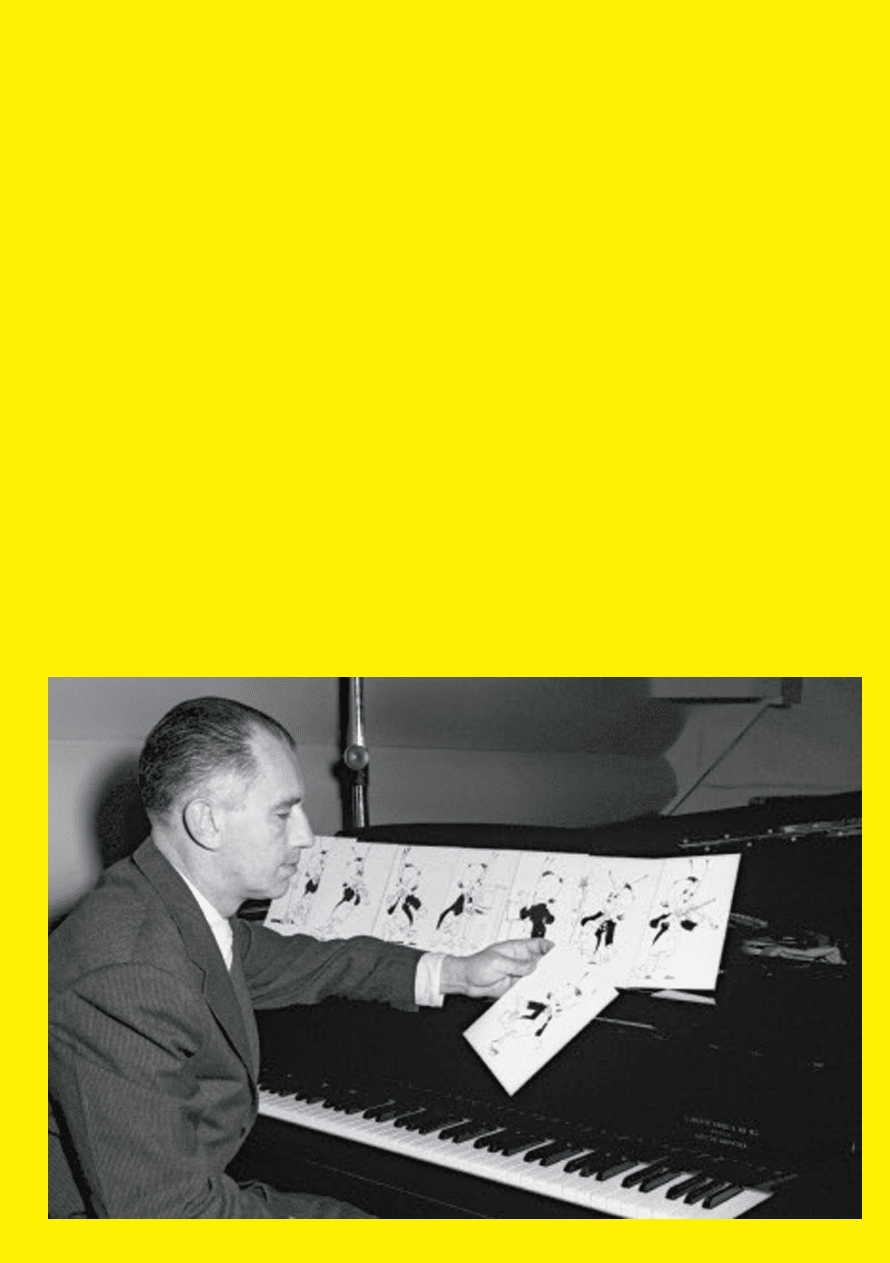
Isabel Vargas Lizano (1919–2012) was born in Costa Rica, but she was Mexican because she decided to be one, “us Mexicans are born where we feel like it”, she used to say. So she also decided to call herself Chavela —“Chavela, with a ‘v’, to piss everyone off”— and become the voice that gave life and legend to Mexican popular music, growing out of all preconceived roles.
It is said that she arrived in Mexico at age 17 and before singing she was a cook, waitress and chauffeur for high society families. It took her over two decades to make a living from singing, despite having the support of José Alfredo Jiménez —accomplice of endless parties.
With her manly and raspy voice due to drink-ing too much alcohol, her eternal cigar, always with her pants on and wearing her poncho, she managed to record her first album in 1961. From there on she recorded over 80 albums and dedicated herself to singing, not only in bars, but also in concerts, television programs and films such as Kika by Pedro Almodóvar; Frida by Julie Taymor, and Babel by Alejandro González Iñárritu, among others. She wanted to sing herself to death, and her friends say that she had set her mind to die, literally, on stage. She did not succeed, but for sure she continues singing in some limbo and will continue to do so just because she decided to.

The creation of the most performed Mexican song in the world and the most famous Spanish language theme in history, “Bésame mucho” [Kiss Me a Lot] is owed to composer Consuelo Velázquez (1916–2005).
Originally from Ciudad Guzmán, Jalisco, Consuelito showed her musical talent from a young age; she said that she composed her flagship song as a teenager, during a break between piano lessons and, interestingly enough, had never kissed anyone.
“I didn’t even know what a kiss was, but it came deep from my heart […]. I couldn’t even think about that, I was educated in a school run by nuns”, she recalled in an interview. She also said that she was inspired by couples that had to separate during World War II. “Bésame mucho” has been translated into 20 languages and has about a thousand different interpretations, including those of Pedro Infante, Diana Ross, Frank Sinatra, Elvis Presley, Nat King Cole, Sammy Davis Jr., Ray Conniff, Andrea Bocelli, “Tin Tan” including The Beatles.
Some of her compositions include “Cachito”, “Que seas feliz”, “Amar y vivir”, “Enamorada”, “Contigo en la distancia”, “Bonito y sabroso” and “Piel canela”, among many more. She was a founding member and a lifetime honorary president of the Mexican Society of Authors and Composers (SACM); in 1977 she received the United Nations Peace Medal, and in 1992 the National Prize for Arts and Sciences.
